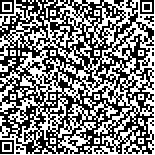本文已被:浏览 30次 下载 20次
Received:May 08, 2024 Published Online:April 20, 2025
Received:May 08, 2024 Published Online:April 20, 2025
中文摘要: 目的 研究复方五凤草液及其成分之一的原儿茶酸对脂多糖(LPS)诱导的人巨噬细胞系(U937细胞M1经典活化型)的极化调节作用。方法 将U937细胞用佛波醇诱导24 h建立未活化型M0细胞; LPS诱导48 h建立经典活化型M1细胞。设置对照组(M0)、模型组(M1)、复方五凤草液干预组(CO-WFC-M1)、原儿茶酸干预组(PA-M1)。以原儿茶酸不同浓度干预LPS诱导的M1型巨噬细胞,CCK8检测M1细胞增殖能力。中性红法、硝酸还原酶法、酶联免疫吸附法(ELISA)及RT-qPCR法检测各组巨噬细胞的吞噬能力、一氧化氮(NO)水平和肿瘤坏死因子-α(TNF-α)、白细胞介素(IL)-1β、IL-6、诱导型一氧化氮合酶(iNOS)蛋白及mRNA表达。流式细胞仪检测LPS诱导的巨噬细胞及原儿茶酸处理后细胞膜表面CD80、CD206的表达。结果 与空白组(原儿茶酸浓度为0)相比,浓度在0.3125~5 mmol/L的原儿茶酸对U937-M1细胞有明显的抑制作用(P<0.05)。M0、M1、CO-WFC-M1、PA-M1组巨噬细胞吞噬率分别为0.48±0.28、1.25±0.26、2.01±0.18、1.80±0.32,组间比较差异有统计学意义(F=166.029,P<0.01)。与M0相比,M1 NO水平显著上升;与M1相比,复方五凤草液或原儿茶酸干预后,NO水平显著降低(P<0.05)。在蛋白和mRNA表达上,与M0相比,M1炎性因子TNF-α、IL-1β、IL-6、iNOS表达显著升高;与M1相比,复方五凤草液或原儿茶酸干预后,iNOS表达显著下降,精氨酸酶-1(Arg-1)表达显著上升,上述炎性因子表达显著下降(P<0.05)。M1表面分化群CD80阳性率97.50%,原儿茶酸干预后,M1表面分化群CD80阳性率为1.33%。结论 复方五凤草液及原儿茶酸均可调控巨噬细胞极化,复方五凤草液及原儿茶酸均可调控巨噬细胞的极化,即抑制分泌促炎因子的MI型、促进分泌生长因子的M2型巨噬细胞,这可能是复方五凤草液促进创面愈合的机制,且该作用与其成分之一的原儿茶酸有关。
Abstract:Objective To study the polarization regulation of compound Wufengcao liquid and one of its components, protocatechuic acid, on human macrophage cell line (classical activated U937 cell M1) induced by lipopolysaccharide (LPS). Methods U937 cells were induced with phorbol myristate acetate (PMA) for 24 hours to establish unactivated M0 cells; LPS was used to induce classical activated M1 cells for 48 hours. The control group (M0), model group (M1), compound Wufengcao liquid intervention group (CO-WFC-M1), and protocatechuic acid intervention group (PA-M1) were set up. Different concentrations of protocatechuic acid were used to intervene LPS-induced M1 macrophages, and CCK8 was used to detect the proliferation ability of M1 cells. Neutral red, nitrate reductase, enzyme-linked immunosorbent assay (ELISA), and RT-qPCR were used to detect the phagocytic ability of macrophages in each group and the levels of nitric oxide (NO), as well as the protein and mRNA expressions of tumor necrosis factor-α (TNF-α), interleukin-1β (IL-1β), IL-6, and inducible nitric oxide synthase (iNOS). Flow cytometry was used to detect the expression of CD80 and CD206 on the membrane surface of LPS-induced macrophages and protocatechuic acid-treated cells. Results Compared with the blank group (protocatechuic acid concentration of 0), protocatechuic acid at concentrations of 0.312-5 mmol/L had a significant inhibitory effect on U937-M1 cells (P<0.05). The phagocytic rates of macrophages in the M0, M1, CO-WFC-M1, and PA-M1 groups were 0.48±0.28, 1.25±0.26, 2.01±0.18, and 1.80±0.32, respectively, with statistically significant differences between groups (F=166.029, P<0.01). Compared with M0, the NO level in M1 significantly increased, and compared with M1, the NO level significantly decreased after intervention with compound Wufengcao liquid or protocatechuic acid (P<0.05). In terms of protein and mRNA expression, compared with M0, the expression of inflammatory factors TNF-α, IL-1β, IL-6, iNOS in M1 significantly increased, and compared with M1, the expression of iNOS significantly decreased, arginase-1 (Arg-1) expression significantly increased, and the above inflammatory indicators significantly decreased after intervention with compound Wufengcao liquid or protocatechuic acid (P<0.05). The positive rate of CD80 on the surface of M1 was 97.50%, and after intervention with protocatechuic acid, the positive rate of CD80 on the surface of M1 was 1.33%. Conclusion Both compound Wufengcao liquid and protocatechuic acid can regulate macrophage polarization, that is, inhibiting the MI macrophages that secretes pro-inflammatory factors and M2 macrophages that promote the secretion of growth factors, which may be the mechanism by which the compound Wufengcao liquid can promote wound healing, and this effect is related to one of its components, protocatechuic acid.
文章编号: 中图分类号:R632.1 文献标志码:A
基金项目:江苏省中医药重点科技项目(ZD202105);南京市卫生技术医学重点发展项目(ZKX20049);南京中医药大学自然科学基金项目(XZR2021086)
引用文本:
